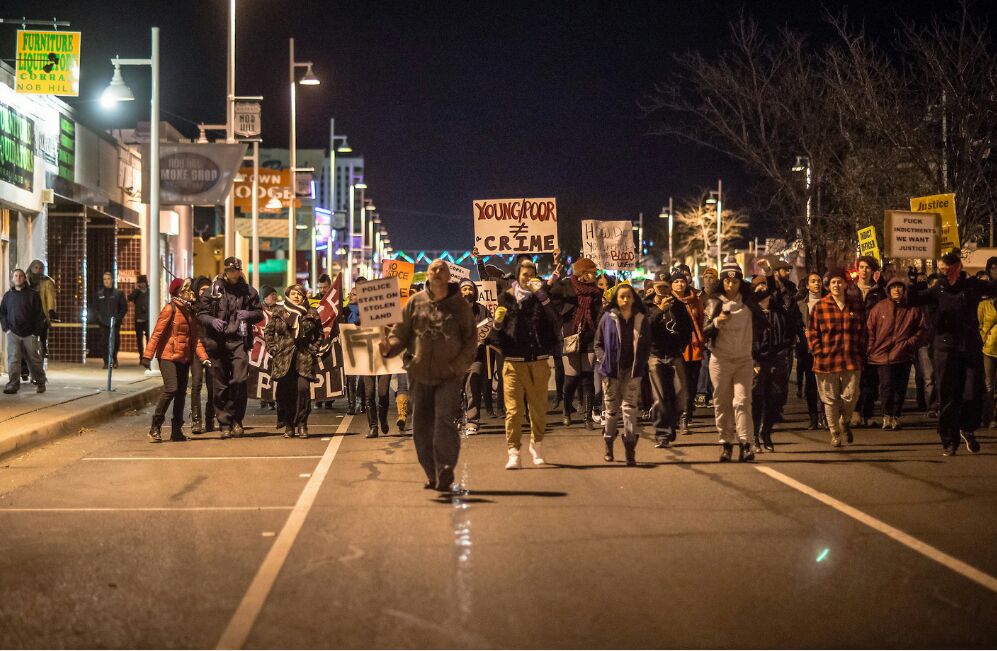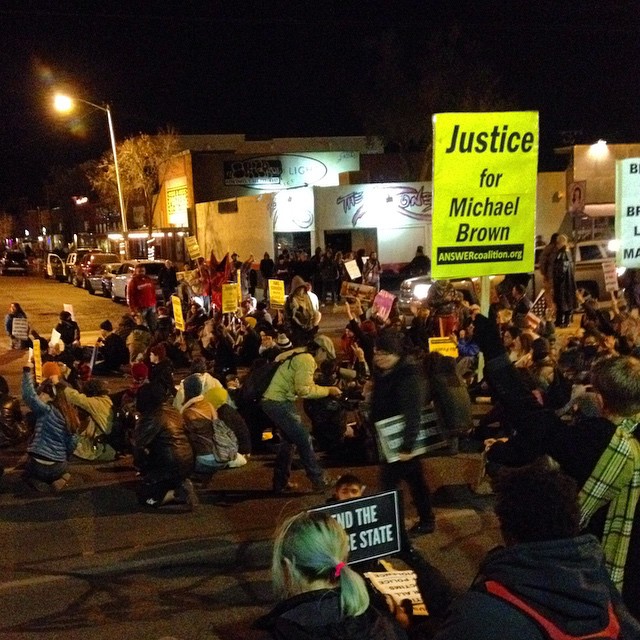In the days following the grand jury decision not to indict Darren Wilson for the murder of Mike Brown, protests erupted in Albuquerque as in many other cities.
As St. Louis County prosecutor Robert McCulloch announced the decision Nov. 25, demonstrators were already gathered in sub-freezing temperatures at the University of New Mexico at an emergency action called by the ANSWER Coalition. When news of the racist grand jury investigation’s results spread through the community, a large contingent from the Black Student Union
arrived to express their grief and anger.
Over 400 demonstrators rallied again the day after at an action called for by (un)Occupy Albuquerque, blocking the San Mateo and Central intersection and marching down six lanes of traffic towards the University of New Mexico. Central Avenue, a main student and commercial thoroughfare, was effectively shut down for three hours as demonstrators chanted, “Hands up! Don’t Shoot!” “Whose streets? Our Streets!” and “The racist system? Shut it down! The whole damn system? Shut it down!”
Among the many to show their support for Ferguson were veterans of Albuquerque’s own anti-police brutality movement.
Albuquerque police kill more people per capita than almost any other city in the United States. Since 2010, APD has shot 40 people, 27 of them resulting in death. The city has not charged a single officer with a crime. Last spring when APD murdered James Boyd, a mentally ill homeless man, for illegal camping—a crime punishable by a $10 fine—protests erupted, ultimately drawing thousands into the streets. The events put Albuquerque on the map as a capital of police brutality.
Albuquerque knows what it is like to live under a police siege. This is why the community took to the streets in a mass display of solidarity with Ferguson and the family of Mike Brown.
Fearful of the powerful resistance that Mike Brown’s death has inspired all over the country, the APD made a strategic decision to stay out of view and simply redirect traffic. Dozens of police officers decked out in full riot gear and armed with high-powered assault rifles prominently guarding a police substation were the only exception. As marchers passed by they pointed and shouted, “*GUILTY! GUILTY!*”
At one point the march convened at UNM campus where a community speak-out began and people voiced the injustices.
Then, demonstrators engaged in a sit-in, blocking traffic during a 4.5 minute moment of silence, each minute representing an hour that Mike Brown’s body lay in the street after he was executed by the Ferguson police.
After three hours, the massive march ended peacefully with announcements of plans to continue to engage in the struggle to end police brutality.
Mike Brown, Oscar Grant, James Boyd and others that were killed at the hands of police are not isolated incidents. This is the same system that let Trayvon Martin’s killer George Zimmerman walk free. Capitalism incriminates the poor, working class, people of color, and the mentally ill. The United States was built on slavery of Black people and the genocide of Native Americans. It is the people’s right to resist an oppressive regime. The movement needs people to speak out against racism, against injustices, and to mobilize. Fighting against racism means fighting against capitalism. It is the people that are going to bring justice, not the U.S. government that is inherently racist in its structure.








